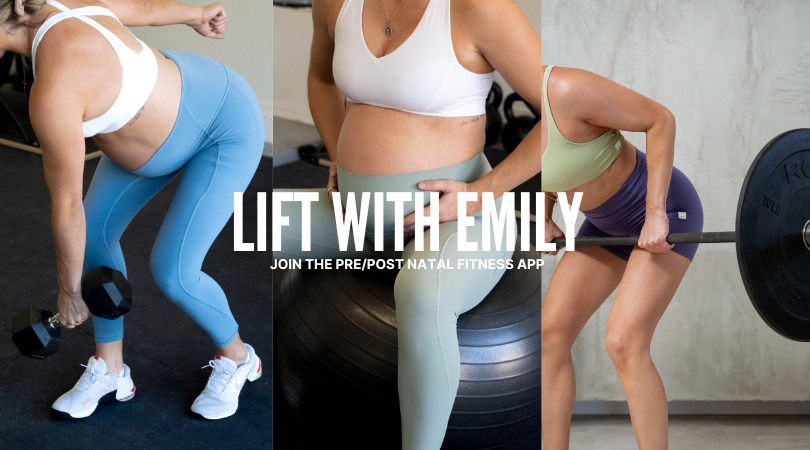A strong core after childbirth is built progressively — it’s about rebuilding your system with intention. Whether you’re newly postpartum, returning from injury, or feeling disconnected from your core, the goal is to retrain the foundational strategies your body uses to breathe, stabilize, and move. By progressing through breath, tension, and load, you give your body the time and input it needs to reconnect key systems and build lasting strength from the inside out.
In this post, we’ll walk through a three-step progression to rebuild a functional core:
Breath → Tension → Load.
Step 1: BREATH — Foundation First
Breath is the foundation of core recovery. The diaphragm isn’t just a breathing muscle — it’s a core muscle. It works together with the pelvic floor, deep abdominals, and spinal stabilizers to manage intra-abdominal pressure and create dynamic stability. If we skip this step, we often end up compensating with strategies like upper ab gripping, shallow breathing, or excessive back arching.
The goal here is to restore ribcage movement, improve diaphragm function, and create space for proper core engagement.
Try These:
- Hands and Knees Breathing with Band Feedback
Focus: Lateral and posterior ribcage expansion. The band helps cue breath into the sides and back of the ribs, reducing reliance on shallow, chest-driven breathing.
- Crocodile Breathing
Focus: Posterior expansion and abdominal wall awareness. Lying on your belly encourages deeper breaths into the back and sides of your ribcage—where many people are limited.
- Hooklying with Ball Push
Focus: Combines breath with a gentle core contraction. The added external feedback can help you feel your core engage as you exhale through movement and reinforce the connection between breathing and core activation.
Step 2: TENSION — Controlled Activation + Positioning
Once breath and ribcage mobility improve, we can begin layering in gentle tension. This phase focuses on teaching the body to co-contract the deep core, glutes, and pelvic floor while holding alignment —without defaulting to gripping or sucking in to brace.
The exercises here are low-load but highly intentional. Think of them as training the system to respond to demand, not just create tension for the sake of it.
Try These:
- Kneeling Pallof Press with Block Squeeze
Focus: Core firing in an upright posture. Squeezing the block activates the adductors and pelvic floor, while the press trains anti-extension and rotation.
- Bear Position Lift Off
Focus: Deep core and shoulder integration. Lifting the knees just off the floor teaches tension management without losing breath or position.
- Banded Hinge
Focus: Rib-pelvis stack and posterior chain engagement. The band cues the hips back while maintaining core control through the trunk.
Step 3: LOAD — Strengthen Under Demand
Once your system can manage breath and tension in stillness, it’s time to bring it into movement. This phase introduces resistance, complexity, and asymmetry—forcing your core to respond and adapt without falling back into compensations like flaring, gripping, or collapsing.
This is where we build true strength that carries over to everyday life, lifting, running, and more.
Try These:
- Deadbug with Pulldown
Focus: Arm and leg movement under tension. The pulldown adds load to the upper body, challenging your ability to resist rib flare and spinal extension.
- Front-Loaded Split Squat with Exhale at Bottom
Focus: Maintain rib-pelvis alignment and breath control under single-leg load. This exercise also promotes pelvic stability and eccentric quad strength.
- Kettlebell or Dumbbell Suitcase March
Focus: Core control with shifting center of mass. This move lights up the deep core, hip flexors, glutes, and spinal stabilizers, especially as you alternate legs.
Final Thoughts
Progressing core recovery isn’t about isolating your abs — it’s about rebuilding a responsive, pressure-managing, full-body system. Breath is where we start, tension builds control, and load brings it all together in real-world movement and builds overall strength.
Take your time at each stage. Moving too fast can reinforce the very compensation patterns you’re trying to undo. With intention and progression, you’ll rebuild a core that’s not only strong but connected, coordinated, and resilient.

I’m deeply passionate about helping women feel strong, informed, and confident through every stage of motherhood. You deserve more than just a list of do’s and don’ts or generic modifications. With years of hands-on coaching across all kinds of athletes and clients, I blend real-world experience with specialized pre and postnatal knowledge to create strength programs that go far beyond basic adjustments. This is high-level, accessible training - built for your body, your season, and your goals
EXPLORE MORE POSTS